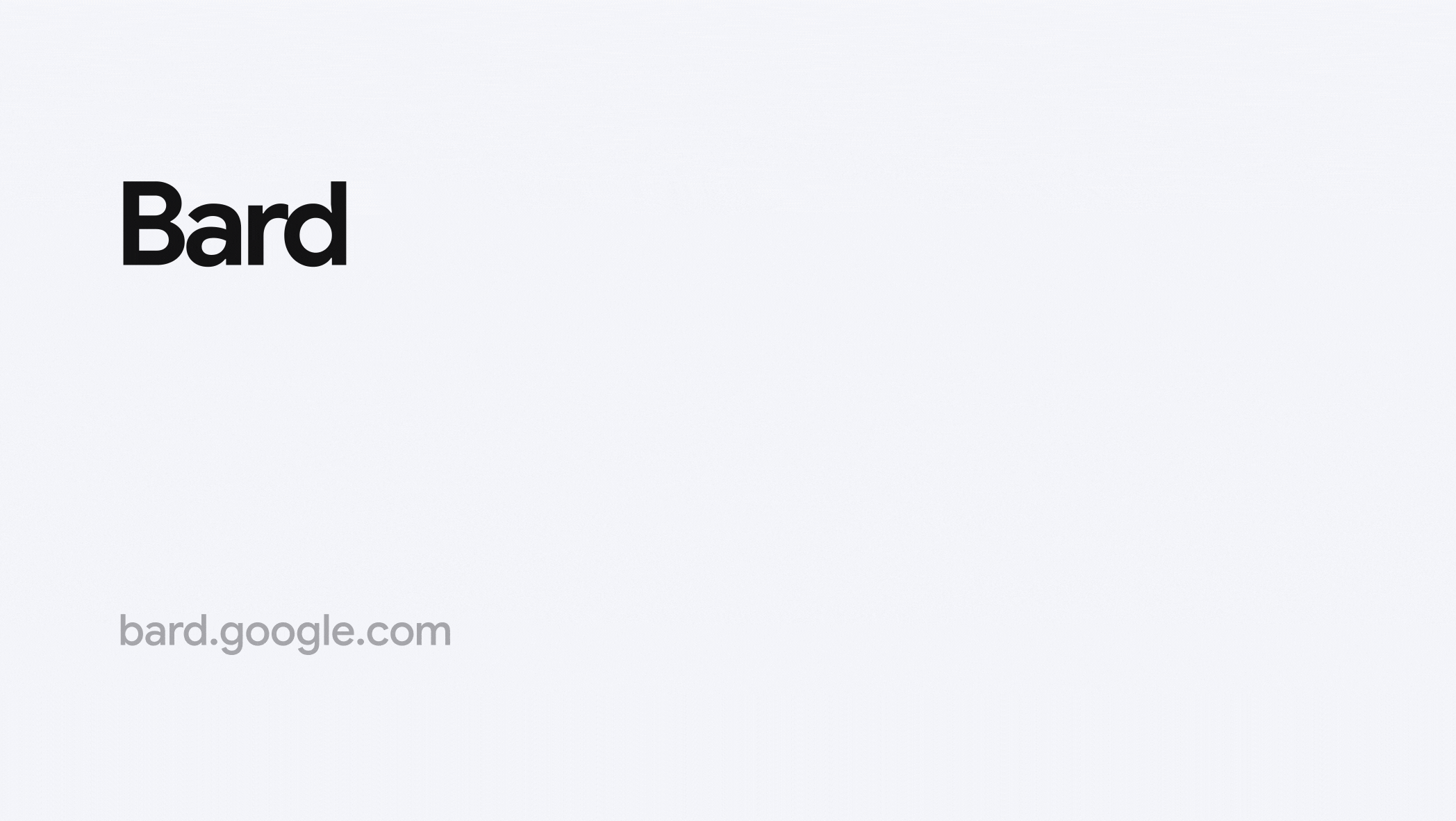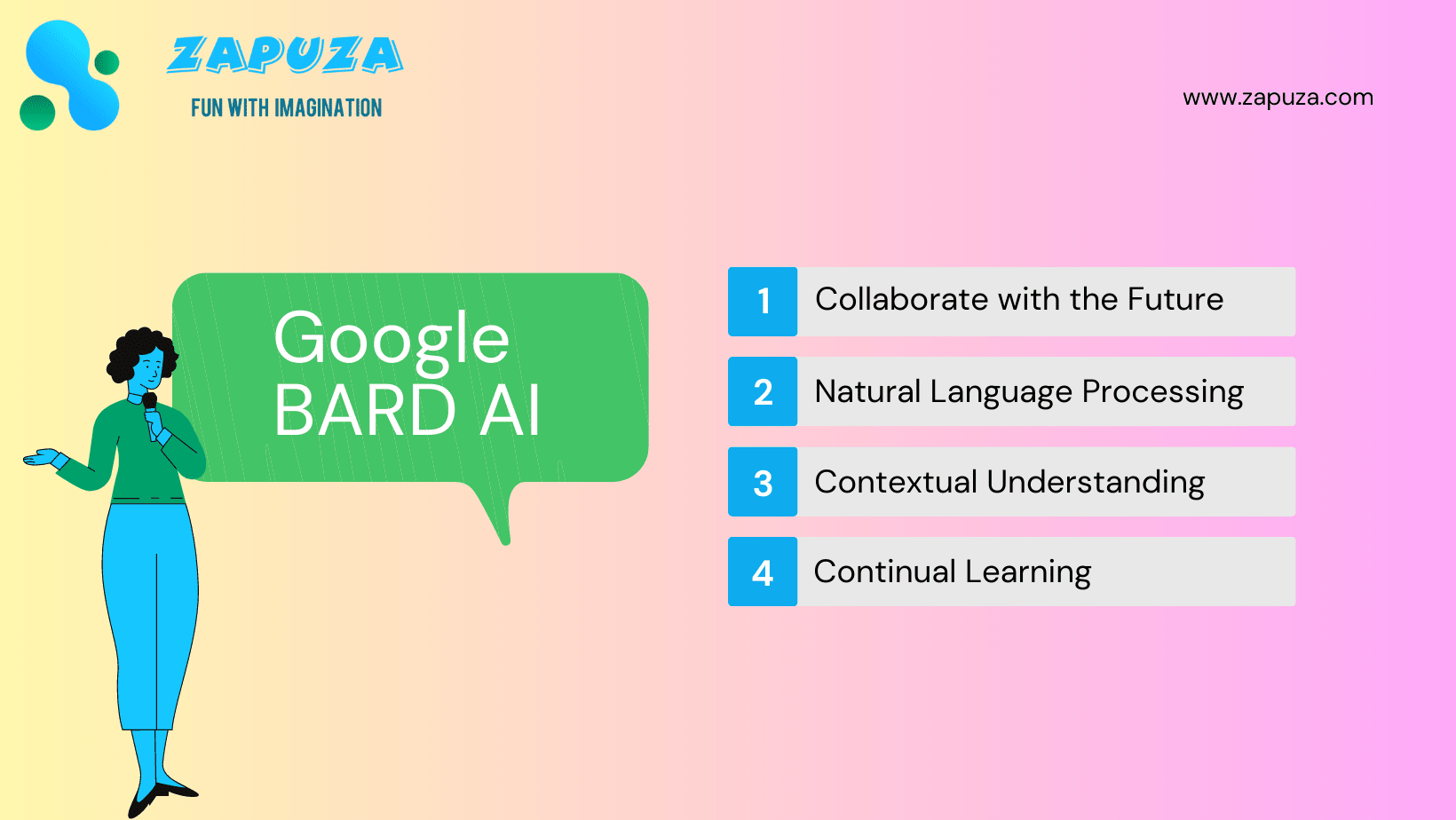Estimated Reading Time : 4 minutes
Table of Contents
Introducing Bard AI, Google’s BARD AI latest experimental project that enables you to collaborate with generative AI. As Google strive to create more useful AI experiences for individuals, businesses, and communities, we’re excited to unveil this new tool.

BARD AI A New Generation Collaborative Tool
With Google Bard AI, you can enhance your productivity, expedite your thought process, and satisfy your curiosity. You can request Bard to offer you suggestions for achieving your reading goals for the year, simplify complex concepts in quantum physics, or stimulate your creativity by proposing outlines for your next blog post. Google’s initial testing of Bard has yielded significant insights, and we’re eager to gather more feedback from a wider audience to further improve the tool.Artificial Intelligence has been a buzzword in the tech industry for years, but it’s only recently that it’s begun to live up to its potential. From chatbots to voice assistants, AI has already transformed the way we interact with technology, but it’s clear that there’s still much more to come.
BARD In Action
One area where Google BARD AI Chatbot has shown tremendous promise is in natural language processing, which refers to the ability of machines to understand and generate human language. This is where Google’s latest project, Bard, comes in.
Bard is an experimental project that aims to explore the possibilities of collaborative generative AI. Essentially, it’s a tool that allows you to work together with AI to generate content and ideas. Whether you’re a writer, a researcher, or simply someone looking to boost their productivity, Bard has the potential to be a valuable asset.
One of the most exciting things about Google Bard AI is its flexibility. You can use it to generate everything from simple tips to complex explanations. For example, if you’re trying to read more books this year, you could ask Bard for suggestions on how to stay motivated. If you’re struggling to understand a difficult concept in quantum physics, Bard could help break it down into simpler terms. Or if you’re a blogger looking for inspiration, Bard could suggest outlines for your next post.
Of course, as with any experimental technology, Bard is not without its limitations. While it’s an impressive tool, it’s not yet perfect, and there are still many areas where it could be improved. This is why Google is keen to gather feedback from a wider audience to help refine and enhance the tool.
Overall, Bard is a fascinating project that could have far-reaching implications for the future of AI. While it’s still in its early stages, it’s clear that this is a tool that has the potential to help us work more efficiently, creatively, and collaboratively.
About Google BIRD AI
At the heart of Bard lies a powerful research-based large language model (LLM) that is designed to optimize the user’s experience. Specifically, Bard is powered by a lightweight and optimized version of LaMDA, which will be updated with newer, more capable models over time. Google’s commitment to providing quality information is evident in every aspect of Bard’s design. To understand how an LLM works, think of it as a prediction engine. When given a prompt, it generates a response by selecting, one word at a time, from words that are likely to come next. However, to ensure that responses are not repetitive or predictable, the LLM incorporates some level of flexibility. As more people use Bard, the LLM will continue to learn and improve, ultimately becoming better at predicting helpful responses.

Large Language Model
While LLMs are undoubtedly exciting, they are not perfect. As with any machine learning model, LLMs are vulnerable to real-world biases and stereotypes. These biases can sometimes manifest in the LLM’s outputs, resulting in inaccurate or misleading information being presented with confidence. For example, while Bard can offer suggestions for easy indoor plants, it may present some inaccurate information, such as the scientific name for the ZZ plant.
Despite these limitations, Bard remains a promising tool that has the potential to revolutionize the way we collaborate with AI. With Google’s continued commitment to refining and enhancing this technology, we can look forward to an exciting future where AI works hand-in-hand with humans to generate high-quality, creative content.
You can sign up to try Bard at bard.google.com. They’ll begin rolling out access in the U.S. and U.K. today and expanding over time to more countries and languages. Google BARD AI Launch Date : March 2023
Conclusion
In conclusion, Google Bard AI is a fascinating and promising project that explores the possibilities of collaborative generative AI. While it is still in its early stages, Bard has the potential to enhance productivity, simplify complex concepts, and stimulate creativity. Despite its limitations, Bard represents a step towards a future where AI works alongside humans to generate high-quality content. As Google continues to refine and enhance this technology, we can expect even more exciting developments in the field of AI.









